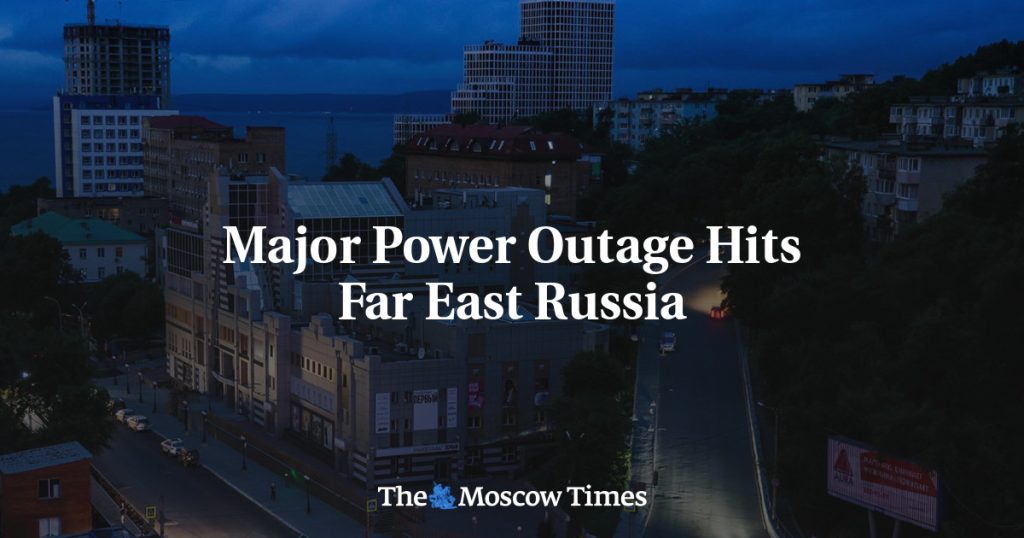Two regions in Russia’s Far East experienced blackouts after authorities conducted pre-planned power outage drills. The regions of Khabarovsk and Primorye, which includes the city of Vladivostok, were impacted by the power outages causing traffic congestion, stranded individuals in shopping malls, and stuck elevators. The Primorye region’s Energy Ministry conducted a scheduled emergency response exercise related to the shutdown of a high-voltage power line as part of the drill to establish cooperation for restoring power quickly.
The Far Eastern Distribution Grid Company DRSK, involved in the drills, attributed the outages to an “equipment failure” at one of the units of the Primorskaya thermal power plant. Acting Energy Minister Yelena Shish referred to the outage following the drill as a “coincidence” in remarks to the Kremlin-linked Telegram news channel Shot. Shish assured that emergency crews were working to restore power to all consumers by Friday evening. She also communicated to Primorye region Governor Oleg Kozhemyako that the regional water supply company was aiming to restore cold water overnight.
Despite efforts to restore power, local media reported that around 600 households in Vladivostok remained without power and 1,000 were without cold water. Vladivostok, with a population exceeding 600,000, faced significant challenges due to the outages. The Primorye region government and emergency services were working diligently to rectify the situation and ensure the basic needs of the affected residents were met promptly. The blackout highlighted vulnerabilities within the region’s power supply infrastructure that needed to be addressed swiftly.
The incident shed light on the importance of effective coordination and response mechanisms during emergencies, such as power outages. The drills conducted by authorities were intended to prepare for such scenarios, but the actual outage tested the readiness and efficiency of the response efforts. The need for enhanced maintenance and monitoring of critical power infrastructure to prevent future failures was underscored by the unexpected outage. Addressing the underlying causes of the equipment failure and implementing preventive measures were crucial steps to avoid similar incidents in the future.
As the situation unfolded in Vladivostok and the surrounding regions, residents and businesses were left grappling with the consequences of the power outages. The disruptions caused inconvenience and posed challenges for individuals reliant on electricity for various aspects of their daily lives. The authorities’ assurances to restore power and water supply indicated a commitment to resolving the issues promptly. The incident underscored the importance of robust power infrastructure and emergency response procedures to ensure the well-being and safety of the population in times of crisis.
In conclusion, the blackouts in Russia’s Far East regions highlighted the necessity of effective emergency drills and response protocols to mitigate the impact of unforeseen events. The incident served as a wake-up call for authorities to review and strengthen the region’s power supply infrastructure to prevent future outages. The coordination between government agencies, energy companies, and emergency services during the blackout emphasized the importance of collaboration in managing such crises. By learning from this experience and implementing necessary improvements, the Far East regions could enhance their resilience and preparedness for similar emergencies in the future.


